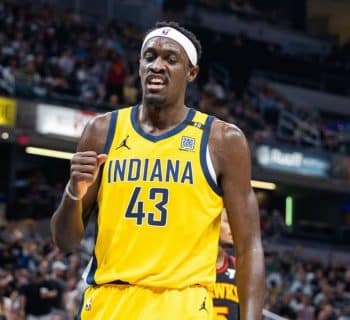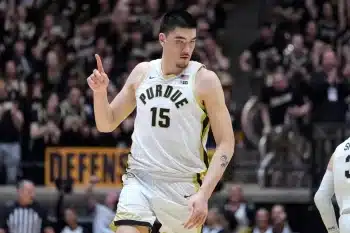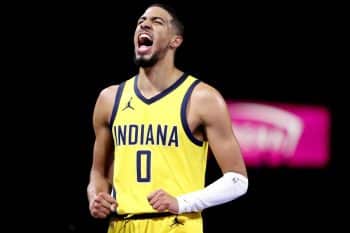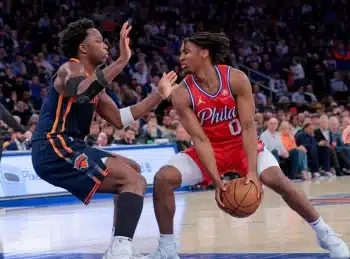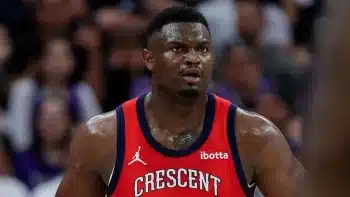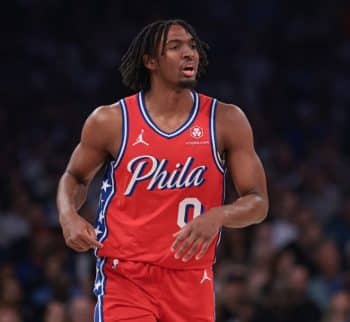NBA
Now What? – Chicago Bulls

After parting with Wendell Carter Jr. and sacrificing two top-four protected first-round picks to acquire Nikola Vucevic at the trade deadline, the Chicago Bulls proceeded to go 12-17, failing to finish in the top-10 in the Eastern Conference.
For his part, Vucevic played well. In 26 games with the Bulls, the two-time All-Star averaged 21.5 points, 11.5 rebounds and 3.9 assists per contest. But fellow All-Star Zach LaVine missed 11-straight games due to health and safety protocols, and he also dealt with a right ankle sprain. Additionally, there were too many instances where it felt like Chicago was on the verge of victory but couldn’t finish the job.
Trading for Vucevic was born out of a desire to establish a winning culture that can help revive the franchise. The Bulls made wholesale changes this past offseason. They brought in former Denver Nuggets general manager Arturas Karnisovas as their new executive vice president of basketball operations. Karnisovas hired former Sixers’ senior vice president of player personnel, Marc Eversley, to be their general manager. And Billy Donovan was named their new head coach.
After a disappointing end to the season, that triumvirate now has to figure out the best way for the Bulls to move forward.
“At this point in time, I cannot tell you what the plan is going to look like. But I can tell you that we’ll look at every possible way to improve the team,” Karnisovas told the media a couple of days after the conclusion of Chicago’s season.
Karnisovas went on to say: “When you have a foundation of, let’s say, two All-Stars in one place, I think it’s easier to add additional things that we need.”
Interestingly enough, one of those two All-Stars is eligible for an extension this summer. That would be LaVine, who’s coming off a season in which he produced career-highs in points (27.4), rebounds (5), and assists (4.9). The same also goes for his field goal percentage (50.7 percent). Despite taking more threes than ever (8.2), he converted them at a 41.9 percent clip; it’s the first time he’s shot 40 percent or better from beyond the arc. He also averaged 5.1 free-throw attempts per game and raised his shooting percentage from the foul line to a career-best 84.9 percent.
As a result of blossoming into a more lethal shooter and a top-10 scorer, LaVine’s effective-field goal and true-shooting percentages also rose to new heights, growing to 59.6 and 63.4 percent, respectively. The latter is the fourth-highest mark among players with a usage rate of at least 30 percent, trailing only Kevin Durant, Stephen Curry and Joel Embiid, per NBA.com.
At his end-of-season press conference, LaVine made it abundantly clear he’s seeking a max-contract extension, saying: “I think that’s what everybody wants to get paid, what they’re worth. When my time comes, I definitely will get that.”
There are currently more than two-dozen players on max contracts; in other words, expect LaVine’s name added to that list.
As for examining other players on Chicago’s roster, none matter more to the team’s future success than Patrick Williams. The former fourth-overall pick is coming off a rookie campaign in which he demonstrated the potential to one day earn himself a max contract.
Williams’ stat line won’t grab your attention. He averaged 9.2 points, 4.6 rebounds and 1.4 assists per game while taking 7.4 shots and making 48.3 percent of them. He also knocked down 39.1 percent of his attempts from beyond the arc, but he only took 1.9 threes per contest. It was the glimpses of three-level scoring and getting dealt defensive assignments ranging from LeBron James and Giannis Antetokounmpo to Zion Williamson and Donovan Mitchell that suggest Williams is capable of developing into a highly impactful two-way wing.
Then, there’s Coby White, who had an up-and-down sophomore campaign. The former seventh-overall pick averaged 15.1 points, 4.8 assists and 4.1 rebounds per game this season. Those numbers reflect his growth as a facilitator and his ability to contribute on the boards, taking advantage of being a 6-foot-5 point guard who can end the opposition’s possession when he crashes the glass. But as a score-first point guard, shooting 41.6 percent on 13.1 attempts from the field and only making 35.9 percent of his 6.6 threes per game leaves a lot to be desired.
During the season, there was a stretch where Coby White lost his job as Chicago’s starting point guard, but to his credit, when he got a second chance, he elevated his performance. In the Bulls’ final 18 games, White averaged 17.6 points, 5.9 assists, shooting 43.3 percent from the field on 14 attempts and 40.3 percent from beyond the arc while hoisting eight threes per contest, per basketball-reference.com.
Now, White has to build off that momentum this offseason. LaVine and Vucevic are going to have the ball in their hands more than anyone else on the team, lessening Chicago’s reliance on White to create points for his teammates. But if he can consistently make the correct read while working off his All-Star running mates, generating points for himself and others as he operates off the ball more than a typical point guard, he can help take the Bulls’ offense to a higher level next season.
Lauri Markkanen’s future with the Bulls is more uncertain. On the plus side, he shot 48 percent from the field and 40.2 percent from beyond the arc while taking 5.8 threes per game — both of those shooting percentages are career highs for him. However, four seasons in, and he’s yet to evolve into more than a spot-up shooter. In April, Markkanen got demoted to the second unit, remaining there until Chicago’s regular-season finale. In those 24 games, with his minutes and touches decreasing, his production dipped. Markannen averaged 9.7 points while taking 7.3 shots per contest.
Markkanen’s contract is now at a point where it’ll take a qualifying offer worth slightly more than $9 million for the Bulls to make him a restricted free agent. When speaking with the media after the season, Karnisovas had the following to say about the matter.
“I think Lauri is an essential part of our team, and we hope he is a part of what we’re building here, so I’m looking forward to free agency and talking to his representation.”
It’s one thing to speak positively about a player to the media, but it’s another to commit financially. In terms of average annual value, how far beyond that qualifying offer are the Bulls willing to extend themselves if Markkanen signs an offer sheet elsewhere?
Speaking of front-court free agents, Daniel Theis, who came over from the Boston Celtics at the trade deadline, played his way into the starting lineup. In 23 games with the Bulls, Theis averaged 10 points and 5.9 rebounds per contest. For his career, Theis is a 33.5 percent three-point shooter. Ideally, Chicago finds a player who can start at the four while providing greater potency from long range and is a more athletic complement to Vucevic. With that said, Theis made $5 million last season, and if at age 29, his market doesn’t shake out favorably, there’s an obvious value to bringing him back.
Thaddeus Young isn’t a free agent, but only $6 million of his $14.2 million contract is guaranteed next season. The 14-year veteran is coming off a productive campaign in which he generated 12.1 points, 6.2 rebounds, 4.3 assists, and 1.1 steals per game. 9.1 of Young’s 9.7 field-goal attempts came inside the arc, and he converted them at a 58 percent clip. There is also the immeasurable value Young adds as a team leader. It’s best to bring him back.
As the Bulls’ new regime tries to establish a winning culture and guide the Bulls back to the playoffs for the first time since 2017, they must overcome the likelihood their top-four protected first-round pick goes to the Orlando Magic because of the Vucevic trade. That deal also sent Al-Farouq Aminu to Chicago. Aminu is on the books for $10.2 million next season, further shrinking the amount of cap space the Bulls have to work with this offseason.
It helps that the Bulls have an All-Star duo to build around, but for them to advance not only to the postseason play-in tournament but to the actual playoffs, they’ll need to upgrade their supporting cast.
